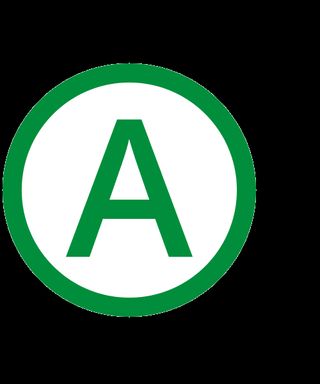“Lesson 8: Everyday Common Items,” EnglishConnect 1 for Learners (2022)
“Lesson 8,” EnglishConnect 1 for Learners
Lesson 8
Everyday Common Items
Objective: I will learn to use this, that, these, and those to ask about what belongs to someone.
Personal Study
Prepare for your conversation group by completing activities A through E.
 Study the Principle of Learning: Press Forward
Study the Principle of Learning: Press Forward
With God’s help, I can press forward even when I face obstacles.
All of us face challenges in life. Sometimes our challenges make it difficult to accomplish our goals. Nephi, a prophet and leader in the Book of Mormon, experienced many challenges. He spent his whole life teaching and serving his people. He knew they would face hard challenges, and he wanted to help them know how to persist. Nephi taught:
“Press forward with a steadfastness in Christ, having a perfect brightness of hope, and a love of God and of all men” (2 Nephi 31:20).
You can press forward too. To “press forward with steadfastness in Christ” means you can keep trying, trusting in Jesus Christ, even when things are difficult. You trust that He will bless your efforts even when things are hard or when you make mistakes. For example, maybe you notice that you are making mistakes when you try to speak English. Maybe you have a hard time remembering new words. You can press forward and keep practicing every day, trusting He will help you learn. No matter what challenges you face, you can press forward with faith.
Ponder
-
What are ways that you can “press forward” in learning English?
-
What helps you keep trying when things are difficult?
 Memorize Vocabulary
Memorize Vocabulary
Learn the meaning and pronunciation of each word before your conversation group. Try creating flashcards to help you memorize new words. You can use paper or an app.
|
not | |
|
this/these | |
|
that/those |
Nouns
|
book/books | |
|
chair/chairs | |
|
clock/clocks | |
|
computer/computers | |
|
key/keys | |
|
notebook/notebooks | |
|
pen/pens | |
|
pencil/pencils | |
|
phone/phones | |
|
table/tables | |
|
wallet/wallets | |
|
watch/watches |
 Practice Pattern 1
Practice Pattern 1
Practice using the patterns until you can confidently ask and answer questions. You can replace the underlined words with words in the “Memorize Vocabulary” section.
Q: What is this?A: This is a (noun).
Questions
Answers
Examples
Q: What is this?A: This is a watch.
Q: What are these?A: These are pencils.
Q: What is that?A: That is a key.
 Practice Pattern 2
Practice Pattern 2
Practice using the patterns until you can confidently ask and answer questions. Try understanding the rules in the patterns. Think about how English is similar to or different from your language.
Q: Is this my (noun)?A: Yes, it is.
Questions
Answers
Examples
Q: Is this your book?A: No, it is not.
Q: Are those her keys?A: Yes, they are.
 Use the Patterns
Use the Patterns
Write four questions you can ask someone. Write an answer to each question. Read them out loud.
Additional Activities
Complete the lesson activities and assessments online at englishconnect.org/learner/resources or in the EnglishConnect 1 Workbook.
Act in Faith to Practice English Daily
Continue to practice English daily. Use your “Personal Study Tracker.” Review your study goal and evaluate your efforts.
Conversation Group
Discuss the Principle of Learning: Press Forward
(20–30 minutes)
-
Read the principle of learning for this lesson aloud.
-
Discuss the questions.
 Activity 1: Practice the Patterns
Activity 1: Practice the Patterns
(10–15 minutes)
Review the vocabulary list with a partner.
Practice pattern 1 with a partner:
-
Practice asking questions.
-
Practice answering questions.
-
Practice a conversation using the patterns.
Repeat for pattern 2.
 Activity 2: Create Your Own Sentences
Activity 2: Create Your Own Sentences
(10–15 minutes)
Look at the pictures. Ask and answer questions about the items in each picture. Take turns. Switch partners and practice again.
Example
-
A: What are those?
-
B: Those are books.
-
A: Are those your books?
-
B: No, they are not my books.
Image 1
Image 2
Image 3
Image 4
Image 5
Image 6
Image 7
 Activity 3: Create Your Own Conversations
Activity 3: Create Your Own Conversations
(15–20 minutes)
Choose five objects in the room. Show them to your partner. Ask and answer questions about each object. Take turns. Switch partners and practice again.
Example
-
A: What is that?
-
B: That is a phone.
-
A: Is it your phone?
-
B: Yes, it is.
Evaluate
(5–10 minutes)
Evaluate your progress on the objectives and your efforts to practice English daily.
Evaluate Your Progress
I can:
-
Say what something is.
-
Use this, that, these, and those.
-
Ask if something belongs to someone.
Evaluate Your Efforts
Evaluate your efforts to:
-
Study the principle of learning.
-
Memorize vocabulary.
-
Practice the patterns.
-
Practice daily.
Set a goal. Consider the study suggestions in the “Personal Study Tracker.”
Share your goal with a partner.
Act in Faith to Practice English Daily
“Don’t you quit. You keep walking. You keep trying. There is help and happiness ahead … It will be all right in the end. Trust God and believe in good things to come” (Jeffrey R. Holland, “‘An High Priest of Good Things to Come,’” Ensign, November 1999, 38).